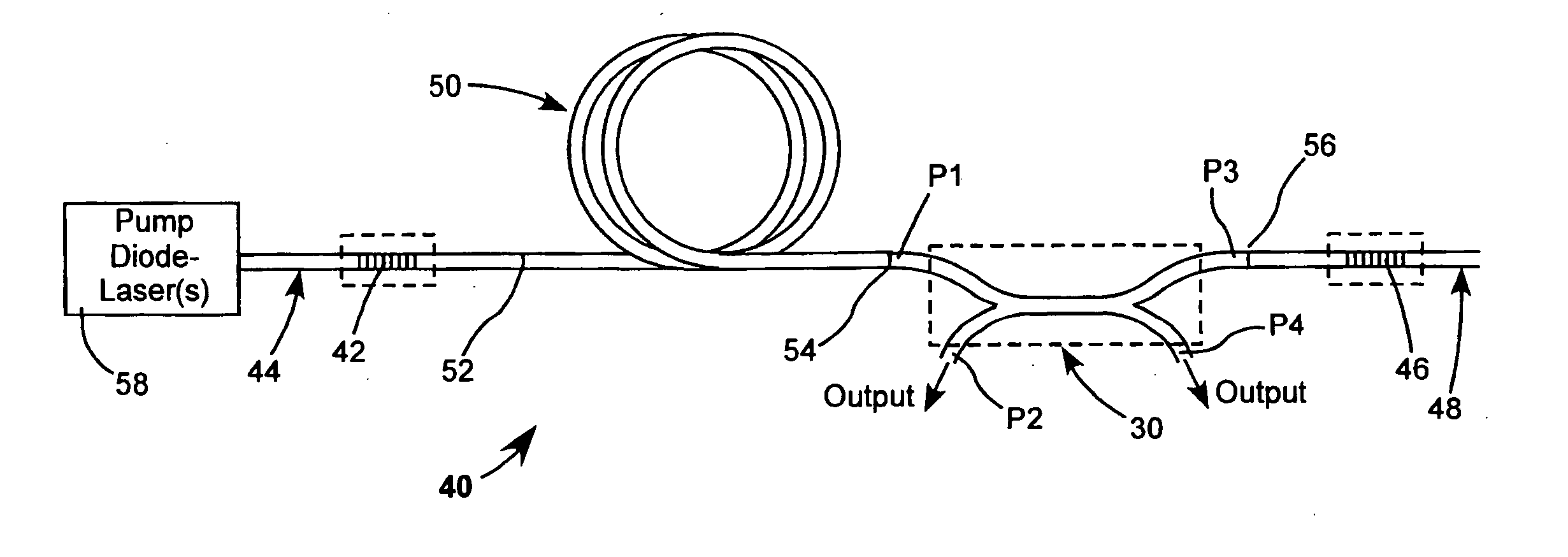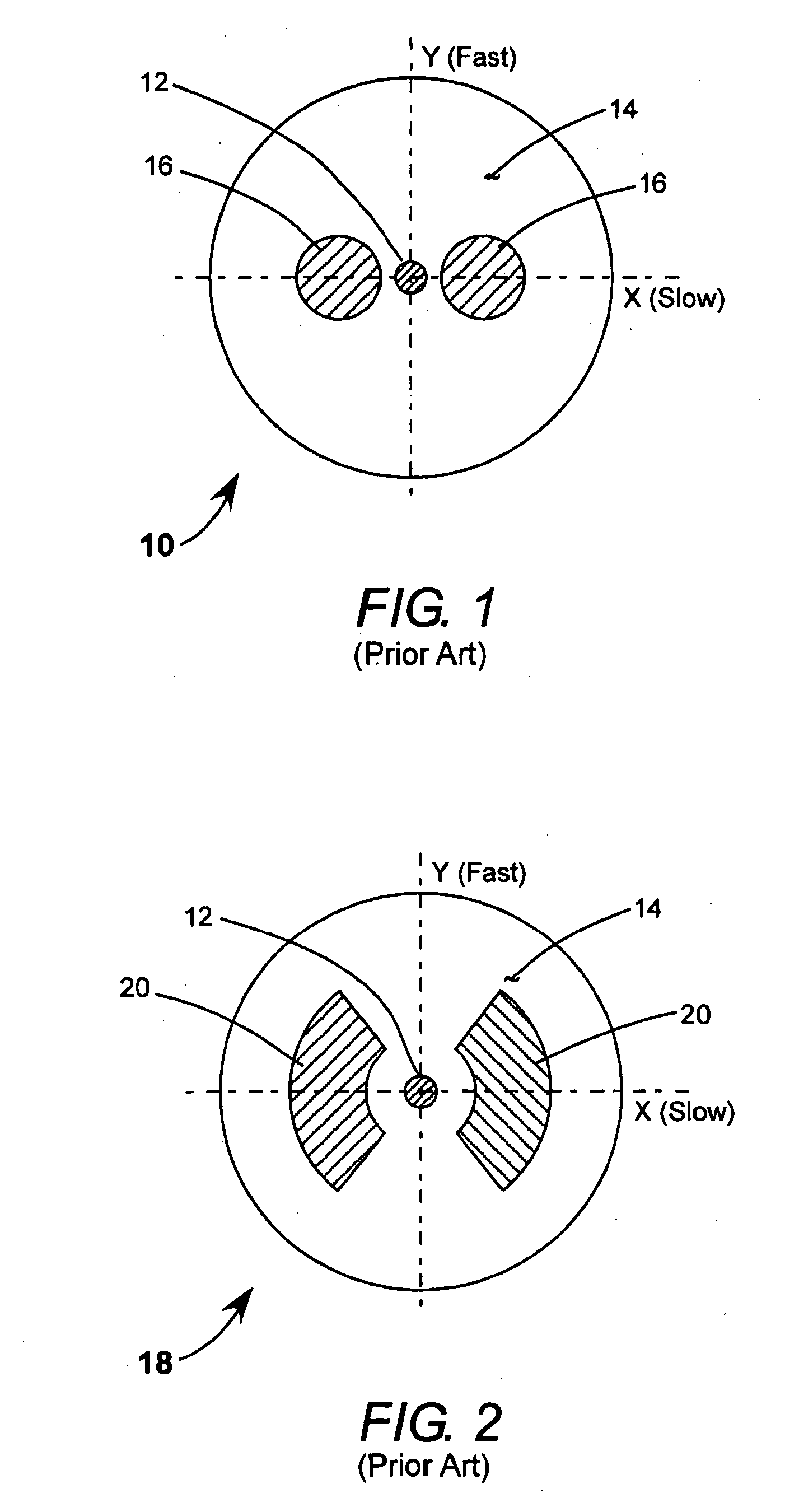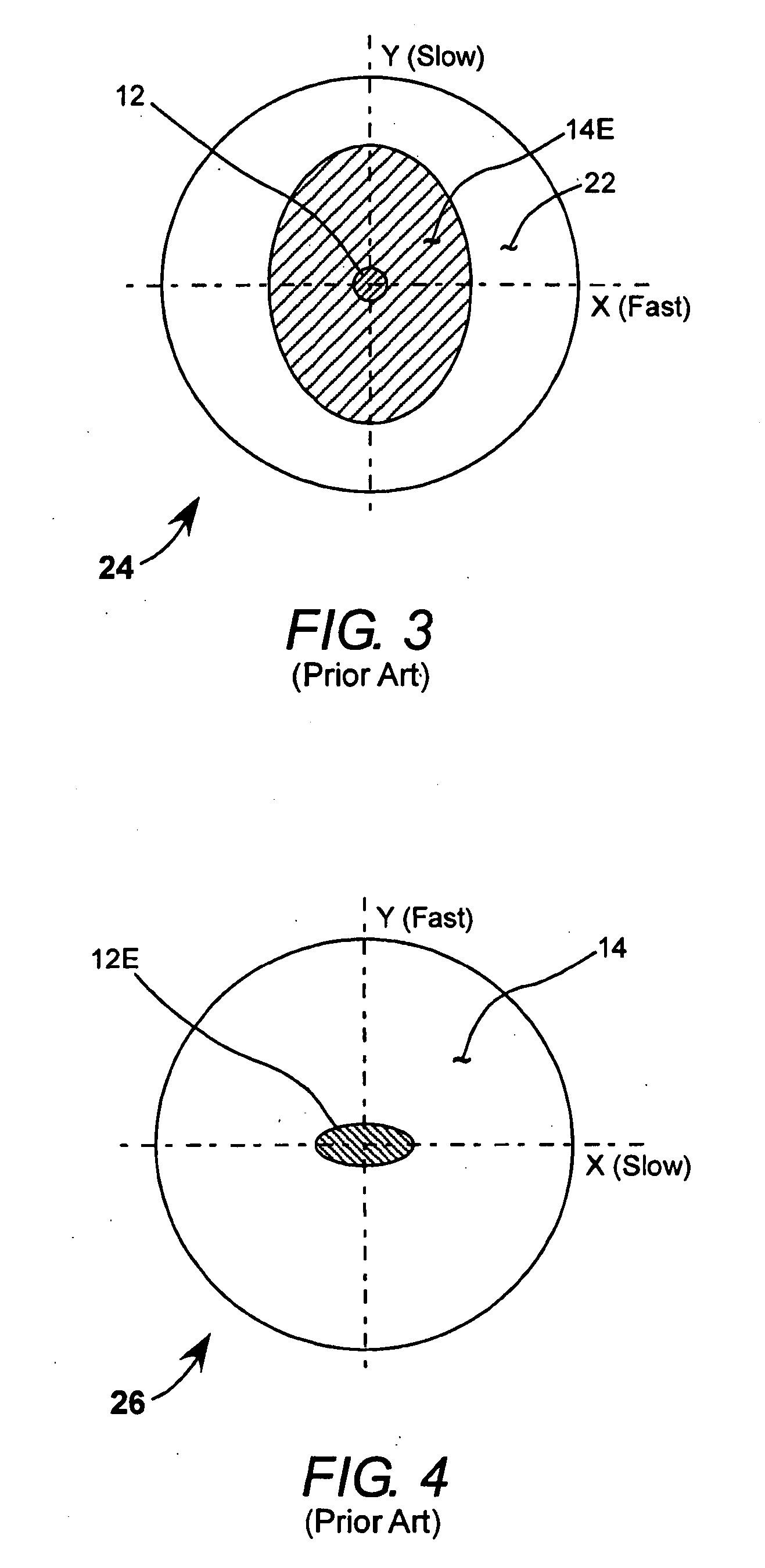Fiber-laser with intracavity polarization maintaining coupler providing plane polarized output
a fiber-laser and coupler technology, applied in the direction of laser details, basic electric elements, electrical equipment, etc., can solve the problems of depolarized output radiation, change of mode polarization, and difficulty in controlling this polarization
- Summary
- Abstract
- Description
- Claims
- Application Information
AI Technical Summary
Benefits of technology
Problems solved by technology
Method used
Image
Examples
Embodiment Construction
[0046] As summarized above, a fiber-laser in accordance with the present invention provides polarized output by including a polarization maintaining coupler (PM-coupler) in a fiber-laser cavity. Preferably, the gain fiber of the cavity and other optical fibers in the cavity are PM-fibers.
[0047] Referring now to the drawings, wherein like components are designated by like reference numerals, FIG. 5 and FIG. 5A schematically illustrate one example 30A of a PM-coupler in which light is coupled between two above-described Panda PM-fibers 10 designated as PM-fibers 10A and 10B in FIG. 5 to facilitate description. The fibers are partially tapered with claddings thereof fused together over a length L, and with cores 12 thereof (indicated in phantom in FIG. 5) spaced apart by a distance S. PM-coupler 30A can be defined as having four ports, indicated as ports 1-4 in FIG. 5. Ports 1 and 3 are at opposite ends of PM-fiber 10A. Ports 2 and 4 at opposite ends of PM-fiber 10B. The coupler is ar...
PUM
 Login to View More
Login to View More Abstract
Description
Claims
Application Information
 Login to View More
Login to View More - R&D
- Intellectual Property
- Life Sciences
- Materials
- Tech Scout
- Unparalleled Data Quality
- Higher Quality Content
- 60% Fewer Hallucinations
Browse by: Latest US Patents, China's latest patents, Technical Efficacy Thesaurus, Application Domain, Technology Topic, Popular Technical Reports.
© 2025 PatSnap. All rights reserved.Legal|Privacy policy|Modern Slavery Act Transparency Statement|Sitemap|About US| Contact US: help@patsnap.com



